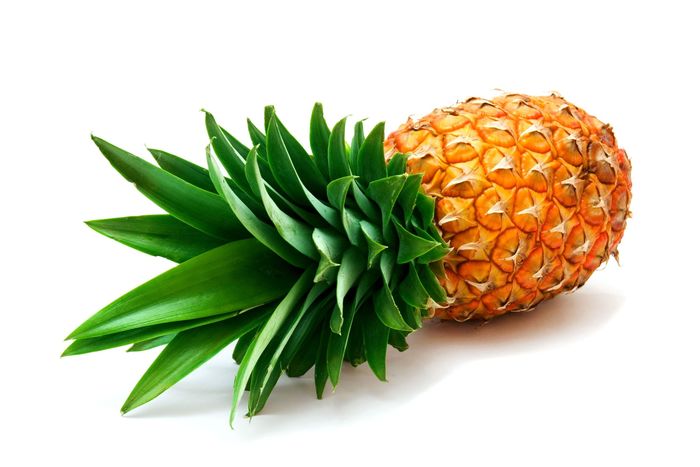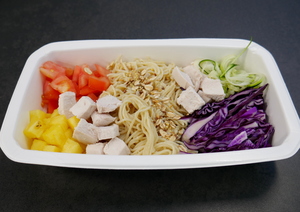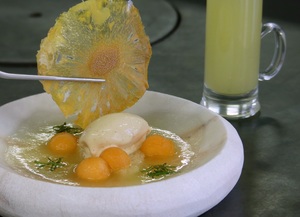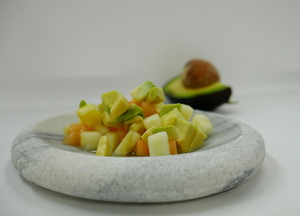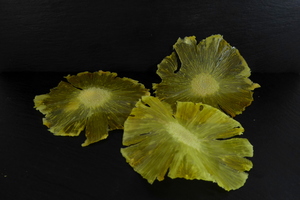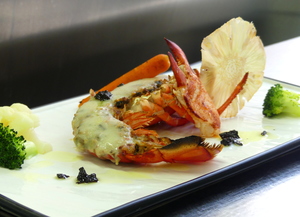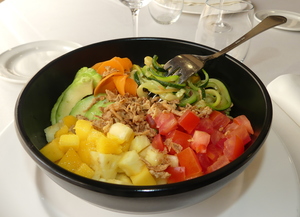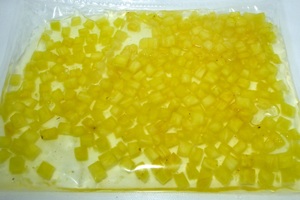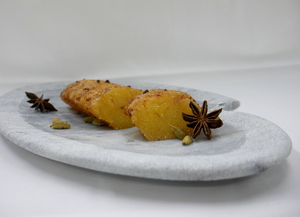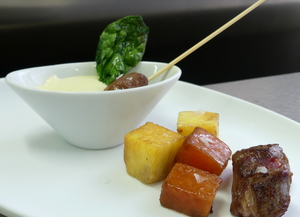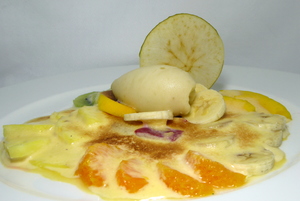Pineapple
Pineapples belong to the Bromeliaceae family, which has around 1,400 species of plants, almost all of them herbaceous, perennial and with striking flowers. Some of them produce proteolytic enzymes, which break up food proteins and are located mainly in the tropical parts of America.
Its water content is high. It has a big carbohydrate and bromelain content, an enzyme that helps digest proteins. Even though it is very sweet, its calories are not that high.
It is a sweet, tasty and juicy fruit, easy to eat. It can be eaten at any age thanks to its appearance, properties and taste.
This fruit can be consumed all year round since its plantations are located in many geographically distant countries.
Pineapples are ripe when the spikes change from green to orangey, even though the fruit is still green.
Pineapples are very fragile and vulnerable to temperature changes. They can be preserved for a few days in a cool and dry place, but never in a fridge as they spoil at temperatures under 7°C.
Once peeled and cut, pineapples can be preserved in the fridge covered in a plastic bag, but they should be eaten as fast as possible. Once they reach their optimal ripening point, they start losing juiciness quickly.
-
Type of dish
- Beers
- Cocktails
- Breakfasts and brunch
- Burguers
- Juices, milkshakes and beverages
- Shellfish
- Bread and pastries
- Pizzas, patty
- Dessert
- Pasta
- Sándwich
- Pastries
- Finger foods
- Ice creams and sorbets
- Legumes
- Salads
- Eggs
- Patty
- liqueur
- Harvard plate
- Main course
- Meats
- Fish
- Birds
- Vegetables
- Soups and creams
- Rices
- Coffee, chocolate and infusion
- Cheeses
- Appetizers and canapes
- Temperature
- Cuisine type
- Additional culinary preparation
- Conservation technique
- Seasonal recipes
-
- Aromatic herbs
- Beverages
- Big game hunt
- Bread and pastries
- Canned goods and pickles
- Cereals
- Condiments, spices and additives
- Cooked, salted, preserved and cold meats
- Dried fruits and nuts
- Dry pulses
- Edible oils and vinegars
- Eggs and derivatives
- Feathered game hunt
- Fish cuts
- Fishes
- Insects
- Kitchen and bakery tecniques
- Kitchen and bakery utensils
- Meat cuts
- Meats
- Milk, cream and derivatives
- Mushrooms
- Offal
- Pasta, rice, flour and derivatives
- Poultry
- Seafood
- Service techniques
- Service utensils
- Vegetables cuts
- Vegetables, fruits, tubers and seaweed

